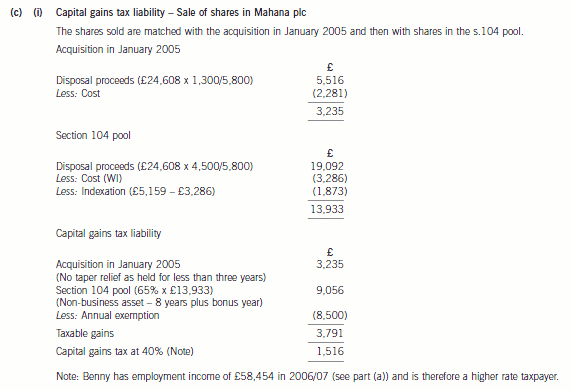ACCA备考,你还在盲目的刷题吗?
发布时间:2019-07-03
其实ACCA很多小伙伴注重刷题,从本质上来说这是没有错的,可是大家不知道的是ACCA刷题也是有技巧的,今天小编就来和大家盘点一下那些ACCA的刷题技巧。
1.找出考试中最不该丢分的地方
(1)统计因各种原因的丢分数值。如计算失误失分、审题不清失分、考虑不周失分、公式记错失分、概念不清失分等。
(2)找出最不该丢的5~10分。这些分数是最有希望获得的,找出来很有必要。在后续学习中,努力找回这些分数可望可及。如果真正做到这些,那么不同学科累计在一起,ACCA考试成绩总分提高也就很可观了。
(3)任何一处失分,有可能是偶然性失分,也有可能是必然性失分,像是ACCA报考条件,学生要学会透过现象看本质,找到失分的真正原因。
2.分析错题原因
ACCA里面除了F6、P6这种特殊科目不需要刷ACCA历年真题,其他的例如F5的学习,小伙伴们最好还是把历年考题和官网上的模考卷都做一遍,然后从每一道错题入手,分析错误的知识原因、能力原因、解题习惯原因。
小编建议大家分析思路如下:
(1)这道题考查的知识点是什么?
(2)知识点的内容是什么?
(3)这道题是怎样运用这一知识点解决问题的?
(4)这道题的解题过程是什么?
(5)这道题还有其他的解法吗?
通常情况下,考试丢分的原因大体有三种,即知识不清、问题情景不清和表述不清。
所谓“知识不清”,就是在考试之前没有把知识学清楚,丢分发生在考试之前,与考试发挥没有关系。
所谓“问题情景不清”,就是审题不清,没有把问题看明白,或是不能把问题看明白。这是一个审题能力、审题习惯问题。
所谓“表述不清”,指的是虽然ACCA考纲知识具备、审题清楚,问题能够解决,但表述凌乱、词不达意。上述问题逐步由低级发展到高级。研究这三者所造成的丢分比例,用数字说话,也就能够得到整体结论,找到整体方向了。
3.经验总结以及回顾
在学习过程中,学会反思十分必要,所谓反思,就是自己和自己对话。这样的对话可能是潜意识的,可能是口头表达,当然最好书面表达。从潜意识的存在到口头表达是一次进步、从口头表达到书面表达又是一次进步,书面表达是对试卷分析的最高级形式,所以,建议学生在做过题后写出书面的试卷分析。这个分析是反观自己的一面镜子,是以后进步的重要阶梯。
对于做过ACCA历年试卷和模考后的分析,大家要牢记九个字:马上写,及时析,经常翻。
①马上写
首先,把做错的题重新抄一遍,然后请教老师同学,详细写出正确过程和答案,老师提供模考讲解,还应根据老师讲解的解题思路补充齐全,毕竟ACCA报名费用也不低。
②及时析
及时写出对试卷的分析内容,包含以下两步:综合评价,即哪些题目做得比较好,哪些题目存在失误?在纠正错题的基础上,对错题进行归类,找准原因,对症下药。
③经常翻
对历年试卷和模考题自我分析写完后,和试卷粘贴在一起,要注意保存。积累多了,可以装订成册。千万不要束之高阁,要经常翻阅复习,以达到巩固知识,加强理解,培养能力,掌握规律的目的,ACCA就业前景毕竟是那么的诱人。
以上就是小编整理的关于ACCA刷题技巧的一些常用方法,小伙伴们不要在一味的埋头苦刷了,把方法技巧运用起来可以事半功倍。
下面小编为大家准备了 ACCA考试 的相关考题,供大家学习参考。
(iii) Whether or not you agree with the statement of the marketing director in note (9) above. (5 marks)
Professional marks for appropriateness of format, style. and structure of the report. (4 marks)
(iii) The marketing director is certainly correct in recognising that success is dependent on levels of service quality provided
by HFG to its clients. However, whilst the number of complaints is an important performance measure, it needs to be
used with caution. The nature of a complaint is, very often, far more indicative of the absence, or a lack, of service
quality. For example, the fact that 50 clients complained about having to wait for a longer time than they expected to
access gymnasium equipment is insignificant when compared to an accident arising from failure to maintain properly a
piece of gymnasium equipment. Moreover, the marketing director ought to be aware that the absolute number of
complaints may be misleading as much depends on the number of clients serviced during any given period. Thus, in
comparing the number of complaints received by the three centres then a relative measure of complaints received per
1,000 client days would be far more useful than the absolute number of complaints received.
The marketing director should also be advised that the number of complaints can give a misleading picture of the quality
of service provision since individuals have different levels of willingness to complain in similar situations.
The marketing director seems to accept the current level of complaints but is unwilling to accept any increase above this
level. This is not indicative of a quality-oriented organisation which would seek to reduce the number of complaints over
time via a programme of ‘continuous improvement’.
From the foregoing comments one can conclude that it would be myopic to focus on the number of client complaints
as being the only performance measure necessary to measure the quality of service provision. Other performance
measures which may indicate the level of service quality provided to clients by HFG are as follows:
– Staff responsiveness assumes critical significance in service industries. Hence the time taken to resolve client
queries by health centre staff is an important indicator of the level of service quality provided to clients.
– Staff appearance may be viewed as reflecting the image of the centres.
– The comfort of bedrooms and public rooms including facilities such as air-conditioning, tea/coffee-making and cold
drinks facilities, and office facilities such as e-mail, facsimile and photocopying.
– The availability of services such as the time taken to gain an appointment with a dietician or fitness consultant.
– The cleanliness of all areas within the centres will enhance the reputation of HFG. Conversely, unclean areas will
potentially deter clients from making repeat visits and/or recommendations to friends, colleagues etc.
– The presence of safety measures and the frequency of inspections made regarding gymnasium equipment within
the centres and compliance with legislation are of paramount importance in businesses like that of HFG.
– The achievement of target reductions in weight that have been agreed between centre consultants and clients.
(Other relevant measures would be acceptable.)


(ii) Identify and explain the principal audit procedures to be performed on the valuation of the investment
properties. (6 marks)
(ii) Additional audit procedures
Audit procedures should focus on the appraisal of the work of the expert valuer. Procedures could include the following:
– Inspection of the written instructions provided by Poppy Co to the valuer, which should include matters such as
the objective and scope of the valuer’s work, the extent of the valuer’s access to relevant records and files, and
clarification of the intended use by the auditor of their work.
– Evaluation, using the valuation report, that any assumptions used by the valuer are in line with the auditor’s
knowledge and understanding of Poppy Co. Any documentation supporting assumptions used by the valuer should
be reviewed for consistency with the auditor’s business understanding, and also for consistency with any other
audit evidence.
– Assessment of the methodology used to arrive at the fair value and confirmation that the method is consistent with
that required by IAS 40.
– The auditor should confirm, using the valuation report, that a consistent method has been used to value each
property.
– It should also be confirmed that the date of the valuation report is reasonably close to the year end of Poppy Co.
– Physical inspection of the investment properties to determine the physical condition of the properties supports the
valuation.
– Inspect the purchase documentation of each investment property to ascertain the cost of each building. As the
properties were acquired during this accounting period, it would be reasonable to expect that the fair value at the
year end is not substantially different to the purchase price. Any significant increase or decrease in value should
alert the auditor to possible misstatement, and lead to further audit procedures.
– Review of forecasts of rental income from the properties – supporting evidence of the valuation.
– Subsequent events should be monitored for any additional evidence provided on the valuation of the properties.
For example, the sale of an investment property shortly after the year end may provide additional evidence relating
to the fair value measurement.
– Obtain a management representation regarding the reasonableness of any significant assumptions, where relevant,
to fair value measurements or disclosures.
(c) (i) Calculate Benny’s capital gains tax liability for 2006/07. (6 marks)

声明:本文内容由互联网用户自发贡献自行上传,本网站不拥有所有权,未作人工编辑处理,也不承担相关法律责任。如果您发现有涉嫌版权的内容,欢迎发送邮件至:contact@51tk.com 进行举报,并提供相关证据,工作人员会在5个工作日内联系你,一经查实,本站将立刻删除涉嫌侵权内容。
- 2019-01-04
- 2019-07-03
- 2019-01-04
- 2019-07-03
- 2019-07-03
- 2019-01-04